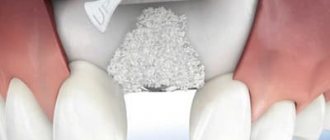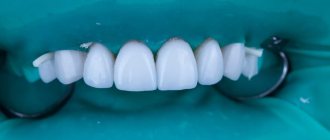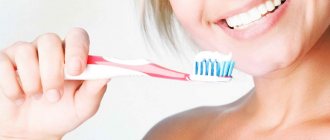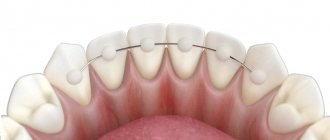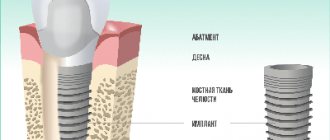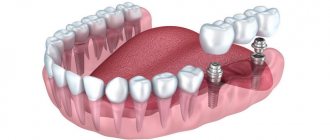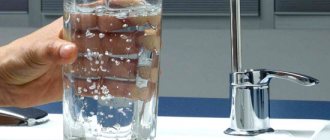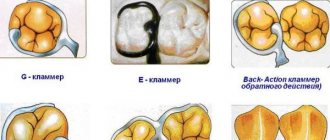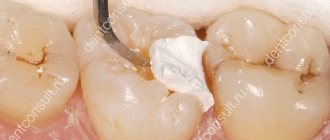Osteoplasty is one of the most popular operations in maxillofacial surgery. Most often it is used to prepare the patient’s jaw for dental implantation. The need for bone grafting is explained by the fact that due to various dental pathologies or the long-term absence of a large number of teeth, the bone tissue undergoes atrophic processes and becomes thinner. Since for installation and good stabilization of the implant the bone must meet certain characteristics (sufficient height and strength), osteoplasty becomes the best option for solving the problem of bone deficiency.
Bone grafting is considered a safe and effective procedure and is widely practiced throughout the world. In addition to careful preparation for the intervention, high-tech equipment and the skill of the maxillofacial surgeon, it is necessary to use high-quality bone materials to achieve the desired final result. Modern dentistry has many methods of bone growth, using different types of bone materials. There are biological and synthetic bone materials, which have their own advantages and disadvantages. After identifying the indications for surgery and conducting a comprehensive diagnosis, the dentist will recommend the most suitable bone material for the patient.
Webinars on using EthOss from world clinicians
REGISTRATION CERTIFICATE
Bone grafting is one of the most popular operations in maxillofacial surgery and dentistry. It is needed to prepare the patient for the installation of a dental implant. Due to various dental pathologies or prolonged absence of teeth, bones undergo atrophic processes and become thin. Since the bone must be sufficiently dense for the implant to be installed and survive well, bone grafting will help correct the bone deficiency.
Biological bone materials are usually created in two ways - either from the bone tissue of cattle, or from cadaveric biomaterials, that is, from the bones of deceased people. Yes, this is allowed in most countries, but you must admit that in the 21st century, using such a technique no longer seems like a completely modern way to restore a smile, and besides, there is a high risk of getting an allergic reaction, or the patient’s personal intolerance to these materials, as well as cross-infection of the bone.
Therefore, technology has not stood still for a long time, and British clinicians have found a way out of this situation and created a completely safe synthetic bone material that causes natural regeneration of human bones, consisting of calcium beta-triphosphate and calcium sulfate. This development is called - bone material EthOss (Ethos)
EthOss is a bone material developed by implantologists for implantologists. It consists of absolutely biocompatible materials that stimulate bone regeneration processes. Contains no animal or human ingredients.
The use of this material has achieved clinical success among a huge number of specialists, since EthOss eliminates the need for donor grafts and artificial scaffolds. The built-in barrier eliminates the need for additional membranes and speeds up the surgical process. This results in a faster operation with a minimally low pain threshold for the patient.
Osteoplasty in dentistry:
- autotransplantation – transplantation of the patient’s own bone, used to increase the width of bone tissue
- sinus lift - an operation to increase bone tissue in length by raising the bottom of the maxillary sinus, performed on the upper jaw
- increasing the volume of bone tissue using synthetic materials (directed bone tissue regeneration)
- use of barrier membranes
Autotransplantation – transplantation of bone blocks
Autotransplantation is carried out in two stages:
- a place is selected from where a small piece of bone will be taken (as a rule, this is the chin area or the pelvic bone)
- At the transplant site, the gum is peeled off, a block of bone tissue is screwed in with a metal screw that is biocompatible with the body, bone tissue crumbs are sprinkled around, a barrier membrane is applied, and the gum is sutured
This type of osteoplasty is considered the most optimal, since your own bone tissue takes root faster and never causes rejection. Of course, as after any operation, the patient will have to experience certain inconveniences.
Sinus lift – increasing the length of the bone tissue of the upper jaw
Sinus lifting is an operation that boils down to raising the bottom of the maxillary sinus, filling the vacated space with natural or synthetic bone tissue, as well as the subsequent implantation of implants. There are two types of sinus lift:
- open sinus lift: first, bone tissue is built up, and after a certain time (from 3 months) implants are implanted
- closed sinus lift: bone tissue is built up simultaneously with implantation
Increasing bone volume using synthetic materials
Synthetic materials are artificial bone tissue. They do not cause allergies or rejection, completely replacing the patient’s bone. They are a powder that is used for any type of bone tissue augmentation surgery.
Who invented the bone material EthOss?
This composition of bone material was invented by two clinicians - Dr. Peter Fairbairn and Dr. Paul Harrison.
Dr. Peter Fairbairn, Professor at the University of Detroit School of Dentistry (Michigan, USA), Director of Education of the Association of Dental Implantology (UK), one of the Presidents of the London Dental Association, and Dr. Paul Harrison (member of PHD, MBA, BSC). He is also a global expert in dental product design.
Following an academic career at the University of Leeds, Dr Paul Harrison founded an independent advanced materials invention consultancy. One successful project involved the development of a bone stretching technique using external fixators to strengthen the union after a fracture. Thanks to this, Paul became interested in the subject of bone regeneration.
From the very beginning, EthOss was designed with dentists in mind. True bone regeneration is more than using bone materials to create volume and an artificial frame. The use of EthOss has been proven to promote faster growth of native bone with little pain. Since 2015, its popularity among dentists and patients has been growing very quickly, which was also facilitated by the British Online Academy. EthOss was conceived and developed by clinicians in the UK and is available worldwide.
Examples of work “Before” and “After”
Restoration of chewing teeth of the lower jaw
Case: destruction of the chewing group of teeth of the lower jaw on the right under a bridge.
Basal implantology with instant loading
Case: The patient complained of an uncomfortable removable denture.
Restoration of all teeth on the upper and lower jaw - basal implantation
Case: partial absence of teeth on the upper and lower jaws, complicated by a severe form of periodontitis (tooth mobility).
Simultaneous implantation in the lateral sections of the upper and lower jaw
Case: tooth decay under crowns in the lateral sections of the upper and lower jaws.
Alternatives to bone grafting –
In some cases, the use of small-diameter implants allows one to completely avoid or significantly reduce the amount of bone grafting. The fact is that for implants of small diameter, much less bone tissue is required. There are Straumann implants with a diameter of only 2.9 mm, and made of the unique material Roxolid (an alloy of titanium and zirconium). This material is much stronger than titanium and also has significantly better osseointegration - compared to implants made of ordinary titanium.
Thanks to these characteristics, the implant remains, firstly, mechanically strong, and secondly, it is able to bear a significantly larger volume of chewing load (compared to larger diameter implants made of traditional titanium). The only disadvantage of implants from this Swiss manufacturer is their higher price.
But if the bone height is insufficient (in situations where bone grafting in a patient is considered undesirable, for example, for medical reasons), another type of Strauman implants can be used, which is called “Standard Plus Short”. This type of implant is only 4.0mm long, which is the shortest internally connected screw implant available on the market. It is used specifically when the bone height is insufficient.
Features of the use of the material
Before introducing the material as implantable tissue, it is moistened with sterile saline, the patient’s blood or his own plasma cell mass. The time between wetting and insertion into the bone defect site is 5 minutes. The filling site is also subject to preparation: it is freed from granulation tissue.
After introducing the material into the defect site and congruent modeling in the bed, it is covered with a periosteal flap. This is followed by suturing.
After the procedure, slight swelling may be observed in this area for two to three days. This is a normal reaction of surrounding tissues to surgery. If necessary, it is possible to observe the attending physician during this period.
Types of allogeneic implants
As already written above, alogen implants are divided into several types, depending on the processing and the therapeutic effect. The most common grafts today are frozen, lyophilized, demineralized, and irradiated allografts. The purpose of freezing tissue is to immobilize water and crystallize it. Cooling to -80 degrees Celsius gives the desired result, but in this case the intracellular fluid, which is necessary for proper healing and growth, also suffers. For this purpose, harvesters use various cryoprotectors that are able to retain fluid inside the cell and prevent allogeneic tissue from losing its regenerative properties.
To prevent denaturation (loss of important protein properties) of bone tissue, lyophilization or drying at low temperatures is used. This method allows a large margin of time for the implant to maintain its basic biological properties. There are also disadvantages to this method, which primarily affect the mechanical properties of the fabric. A study was conducted in which allogeneic tissue lost up to 30-40% in compressive and flexural strength and 60% in torsion, but only in cases where the donor bone was treated with a combination of two treatment methods: lyophilization and gamma ray sterilization.
To enhance the osteoinductivity of allogeneic implants, they are subjected to demineralization. This method involves processing bone tissue so that specific morphogenetic tissue proteins are exposed. All this ultimately makes it possible to transform connective tissue cells into osteoprogenitor cells, which stimulate the mitotic efficiency of cell activity and promote their division, affecting tissue morphogenesis.
Splitting of the alveolar process -
Used in horizontal bone resorption to increase the thickness of the alveolar process. Can be performed on both the lower and upper jaws. It must be said that this is the most effective method of expanding the alveolar process today, which also has a low cost (it does not require expensive bone materials and membranes). There are several varieties of such splitting, but we will especially focus on the “Split-Control” technique, which allows for simultaneous expansion and installation of implants.
The content of the “Split-Control” technique (Fig. 5-10) - after detachment of the mucoperiosteal flaps (gum) in the center of the alveolar ridge, a cut is made with a milling cutter or other special tools to the height of the future implant (Fig. 6). Next, a pilot drill is used to mark a hole for the implant(s) and spreaders are screwed into the prepared holes (Fig. 7). By using different sizes of spreaders from smaller to larger, you can increase the width of the ridge and immediately install the implant.
There is always a gap left on the sides of the implant, which is filled with bone material, which, if necessary, can be applied in excess to the outside of the alveolar process, covering it all with a special resorbable membrane (Fig. 9). After which the wound is sutured, and we wait for osseointegration of the implant within 3-4 months.
Bone grafting of the lower jaw (splitting method) –
Advantages of the technique –
- Firstly , thanks to the splitting of the ridge, we get a bone defect that has bone walls on all sides (except on top).
Thanks to this, rapid and high-quality osteogenesis (new bone formation) occurs, because the spongy bone deep in the alveolar process is rich in blood vessels, osteoblasts, mesenchymal cells, growth factors... Speaking of why it is much worse to increase the width of the bone not due to splitting (from within the alveolar process), and do this by externally attaching bone blocks or bone chips outside cortical plastic surgery of the alveolar process (24stoma.ru). The fact is that the outer cortical layer of bone is very dense and there are practically no blood vessels in it. Accordingly, the implanted bone material will take a very long time to grow blood vessels, bone formation will be slower, and there will be a greater risk of failure and complications of such bone grafting.
- Secondly , there is no need for expensive bone materials and membranes, again due to the fact that this is a three-wall defect inside the alveolar process, and not outside it. There are enough inexpensive materials, for example, the bone material "Osteodent-K" and the membrane "Osteodent-Barrier". But if you are principled, then you can also use expensive materials like “Bio-Oss”.
- Thirdly , installation of implants with this technique is possible in most cases immediately. If the implants are installed later, then only 3-4 months will have to pass between operations, which is significantly less compared to other bone grafting methods.
Splitting of the alveolar process: animation and video of the operation
Important: There are several types of splitting techniques. With “Split-Control”, the cutter makes only a cut along the crest of the alveolar process + a pair of vertical cuts to the thickness of the cortical plate. But there is a variation of this method, where an additional horizontal cut is made at the level of the tops of future implants, which leads to complete detachment of the bone block (vestibular cortical plate).
Then this block is fixed with screws, which often break it. With this modification of the technique, implants are not installed immediately, but after 3-4 months. In addition, it is quite traumatic and there is a greater risk of complications. This type of technique should only be used for the thinnest alveolar process (2 mm), but some doctors use it even in cases where this is not necessary.
Characteristics
During the production of Bio-Oss, organic components are extracted from raw materials. Only calcium phosphate is used, which is a mineral base in which there are many microcapillaries and microtunnels.
According to the physicochemical characteristics, Bio Oss is similar to human bone tissue. Hence the positive reaction of the human body to this material, which integrates well with the patient’s primary bone.
The external topography of the implanted materials has a rough surface, which promotes the adhesion of the implanted material, the proliferation of young cells and the rapid synthesis of connective tissue.
The large area of the internal surfaces of the implant promotes intensive ingrowth of blood vessels into it, as well as active and rapid integration and healing of open wounds.
